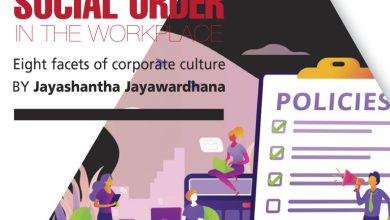COMMUNICATION SKILLS

THE POWER OF
QUESTIONS
Productive ways to elicit honest answers
BY Jayashantha Jayawardhana

It was none other than Albert Einstein who famously told us to ‘question everything.’ For a business executive, asking questions is an important part of his or her corporate routine. It may involve requesting a status update from a team lead, getting information from a client about specific business requirements or questioning a counterpart in a tense negotiation among other topics.
But there’s a problem here. Unlike professionals such as litigators, journalists and doctors – who are taught how to ask questions as part of their training – few executives view questioning as a skill that can be picked up and sharpened. Nor do many consider how their own answers to questions could make conversations more fruitful.
In an insightful article titled The Surprising Power of Questions, which was published in the Harvard Business Review (HBR), Alison Wood Brooks and Leslie John wrote: “It (questions) spurs learning and the exchange of ideas, fuels innovation and performance improvement, and builds rapport and trust among team members.”
Questioning comes easily for some people. Their natural inquisitiveness, emotional intelligence (EI) and ability to read people enables them in this process. But most of us don’t ask enough questions nor do we ask the right questions or pose them in an optimal way. The good news is that by asking questions, we naturally improve our EI and get better at the task.
Insights from behavioural science research show that the way we frame questions and choose to answer what’s asked from us can influence the outcome of conversations.
FOLLOW UP Not all questions are created equal. Research by Brooks, using human coding and machine learning, has discovered four types of questions: introductory (how are you?), mirror (I’m fine – how are you?), ‘full-switch’ (ones that change the topic entirely) and followup (ones that solicit more information).
Each type is commonly found in natural conversations. But of all these types, followup questions seem to work real conversational magic. They serve to convince your conversation partner that you are attentive, empathetic and eager to know more. People interacting with someone who asks plenty of followup questions tend to feel respected and heard.
RESPONSES Let’s distinguish between open-ended and closed-ended questions. Open-ended questions are those that allow a free form answer. Closed-ended questions can be answered with ‘yes’ or ‘no,’ or have a limited set of possible answers. No one wants to feel interrogated even under the friendliest circumstances, not to mention the colder and more formal settings at work. And closed-ended questions, for all their clarity, can push respondents into a yes or no corner.
However, open-ended questions can be useful in discovering information or learning something new. Indeed, they are wellsprings of innovation, which is often the result of finding the hidden, unexpected answer that no one has thought of before. But open-ended questions won’t cut much ice where it’s essential to establish clarity and certainty regarding an issue.
SEQUENCE The optimal order of your questions hinges on the circumstances. During tense encounters, posing tough questions first – even if it feels somewhat inappropriate and awkward to do so – can make your conversation partner more ready to open up. John and her coauthors found that people were more willing to reveal sensitive information when questions were asked in a diminishing order of intrusiveness.
However, if the first question is overly sensitive, you could risk offending your counterpart. So the process is obviously a delicate balance. On the other hand, if the goal is to build relationships, the approach of beginning with less sensitive questions and escalating slowly seems to be most effective.
RIGHT TONE People are more honest when you ask questions in a casual way rather than in a stiff, formal tone. In one of John’s studies, participants were posed a series of sensitive questions in an online survey.
For one group of participants, the website’s user interface looked casual and for another group, the site looked official. The control group was presented with a neutral looking site. Participants were twice as likely to give away sensitive information on the casual looking site than on the others. People also tend to be more forthcoming when they’re given an escape hatch or ‘out’ in a conversation.
DYNAMICS Conversational dynamics can change profoundly depending on whether you’re chatting face-to-face with someone or conversing in a group. Participants’ willingness to answer questions is not only influenced simply by the presence of others but also because members of a group tend to follow one another’s lead.





